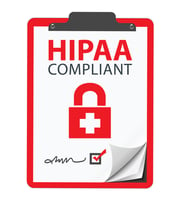Building a healthcare clinic — a space where care meets community — is a dream for many...


Healthcare professionals regularly find themselves struggling to find the best ways to help patients, working in a world where masks continue to be a controversial topic and health is a valued commodity. Society has discovered, thanks in part to the coronavirus pandemic, that a work-life balance is a higher priority than it had been given of late and has begun taking steps to change lives for the better.
Healthcare employment is projected to increase 13% by 2031, and the U.S. Bureau of Labor projects that means 2 million new jobs in a decade. With more employees to think about, Healthcare HR has some ongoing concerns to address.
Healthcare HR staff are seeing old concerns grow in scope and new difficulties weigh in, all while retaining pressure to keep budgets intact and pacify staff members unhappy with their work environment. Below are the top six challenges that Healthcare HR staff find themselves facing as 2023 progresses:
Staff Concerns
Recruiting Talented Staff
Funding Constraints
Changing Laws
Clarity of Expectations
Burnout
Sufficient medical staff is a top priority at any time, and current struggles to maintain adequate staffing while dealing with cutbacks or turnover, the concern has moved to the top of the list.
Employees report dissatisfaction with their work environment, compensation, or other aspects of their current career and are making the decision to change jobs. As employees leave and the remaining staff struggles to continue providing the same level of care and attention to patients, tracking hours and maintaining employee records are secondary. This leads to issues with both, putting more pressure on a staff that is already short-handed and contributing to greater issues down the road.
Employee retention, therefore, is being prioritized more than ever. There is extra focus on support for employee wellbeing in the workplace, efforts to improve team building and employee engagement, and even new tactics to help address overwhelm and burnout in long-time staff.
With the rise in gas prices, combined with the desire for work-life balance inspired by the pandemic, demand for work-from-home and remote positions continues to rise. While remote jobs are not feasible in every industry, qualified candidates seek flexibility in employment that requires task completion in person.
Employers face the challenge of finding a happy medium that prioritizes productivity and work completion without leading to employee burnout and long-standing vacancies.
Recruitment is a top priority for HR at any time. However, when the current employees are stretched thin, it becomes a bigger concern. With the pandemic and prevailing opinions on work-life balance and careers in healthcare, recruitment may be even more difficult.
Benefits packages, potential sign-on bonuses, and competitive salaries are popular ways to recruit staff who bring experience and needed knowledge to t he practice. However, these are costly elements of the process.
he practice. However, these are costly elements of the process.
Training and development are gaining popularity, and the lack of opportunities can be a tipping point for staff who pursue other career paths. The same is true for an inclusive workforce. The lack of a welcoming environment can be a big reason staff members choose to look for another job. HR has to combat these issues and find a way to recruit and retain experienced medical staff.
A dollar can only stretch so far. When it comes to priorities, technology is a valuable investment, but it can require a reduction in other budgetary areas. Medical professionals have to weigh the benefits of new technology versus the sacrifices that might be required in other areas to cover the costs.
Those sacrifices might include less available funds for employee appreciation, such as gifts, holiday bonuses, and staff luncheons. While that may seem like a worthwhile tradeoff to the management staff, employees may not agree that the value of the new technology was worth the loss of employee appreciation efforts.
Meanwhile, the cost of turnover is significant and can put added stress on the annual budget. as well. HR staff must find a way to balance training new employees, budgeting for benefits packages, and hiring incentives, all while maintaining employee satisfaction for long-time staff members. A high rate of employee turnover can lead to patient loss as well, decreasing revenue and further reducing the budget.
Laws in Texas regarding healthcare are passed regularly. Some go into effect immediately, while others begin with the start of the new fiscal year in September.
In September 2021, 36 laws related to healthcare went into effect in Texas. These laws covered everything from prescription drugs and benefits, coverage, and pandemic response to transparency. This does not count the laws that went into effect immediately. Therefore, this provides only a snapshot of the challenge medical personnel face in staying current with what’s required.
With this many new laws regularly enacted and the varied timelines for when they take effect, HR can find it challenging to remain in compliance. HR can struggle to keep up with adequate training for both existing and newly hired employees. These tasks are added to those required for the day-to-day operation of the practice. In order to balance this requirement with the various needs of your practice, it is important to work with partners who can stay current on the regulations and guide your practice in the best way to ensure you meet those regulations.
There are only so many hours in a day. Employees find themselves frustrated when their schedule includes a meeting, especially when that meeting is not well-organized and does not clearly convey the information intended.
Practices can find it taxing to monitor and improve productivity, and those concerns only escalate when staff is not informed of changes to policies and procedures and supported in efficiency efforts. While holding a meeting to keep staff members informed is necessary, the organization of that meeting is even more important in maintaining a positive work environment for all involved.
When you don't effectively communicate upcoming changes to the day-to-day operations of your practice, employees can feel undervalued and that they aren't part of the team. This, in turn, can lead to a correlating decrease in productivity, frustration for management, and a continuation of the turnover cycle.
Burnout is a steady concern in the healthcare field. Burnout is leading to early retirement, and Frogner and Dill’s survey states, “Given the high demand for long-term care workers, targeted attention is needed to recruit job-seeking healthcare workers and retain those currently in these jobs to lessen turnover.”
In order to reduce burnout, HR teams should:
One positive of the way today’s world works is that there are experienced businesses capable of helping a medical practice with some of the above issues. This frees up staff and time to address other situations and hopefully cut down on turnover rates and obstacles related to hiring new staff.
99MGMT is one such agency, where tasks that may seem intimidating are a feature their experienced staff can handle with ease.
These tasks include:
Streamlining technology integration
Creating a clear plan and facilitating the execution of change
Onboarding - including benefits, training, and recruitment
Billing and paperwork, allowing more focus on patient satisfaction and easing the workload of on-site employees
Hiring a virtual assistant can also be beneficial in today’s struggle to find the right staff, and 99MGMT can also help you with this process. You can read more about the benefits of a virtual assistant here.
According to the Texas Department of State Health Services, Texas will face a shortage of RNs, NPs, CRNAs, and CNMs “in relation to projected demand for each nurse type each year between 2015 and 2030.”
The IHS Inc.’s Healthcare Workforce Model, using Texas-specific data, shows that nursing homes, residential care, and home health settings are projected to see a faster rate of growth in that timeframe. They project the demand for nurses in home health settings to increase by 74%.
This trend does not indicate the need for nurses in medical practices will decline. Therefore, the best way to prepare your practice for future staffing concerns is to find the right partnership to help strengthen your staff by reducing turnover and addressing recruitment challenges however possible. Contact 99MGMT today to discuss the best way to move forward with your HR priorities.


Building a healthcare clinic — a space where care meets community — is a dream for many...

Leaving a comfortable medical practice can be daunting. You've built strong patient relationships...

Trust is a big part of every patient-provider relationship. People want to know their doctors are...

Compliance is a critical concern in the healthcare industry, where complex regulations protect...

Imagine trusting your doctor’s recommendation for a medical service, believing it’s based solely on...

Running a healthcare practice comes with great responsibility – especially when protecting patient...

Switching EHR systems isn’t just an IT project — it’s a transformation that affects every aspect of...

Physician credentialing isn’t just a procedural necessity; it's a strategic linchpin in building a...

In healthcare, accurate health insurance verification isn’t just a task — it’s the key to smoother...

Comprehensive Guide to Managing Medical Practice Operating Expenses
Running a medical practice involves more than providing excellent patient care – it requires...
Leave a Comment